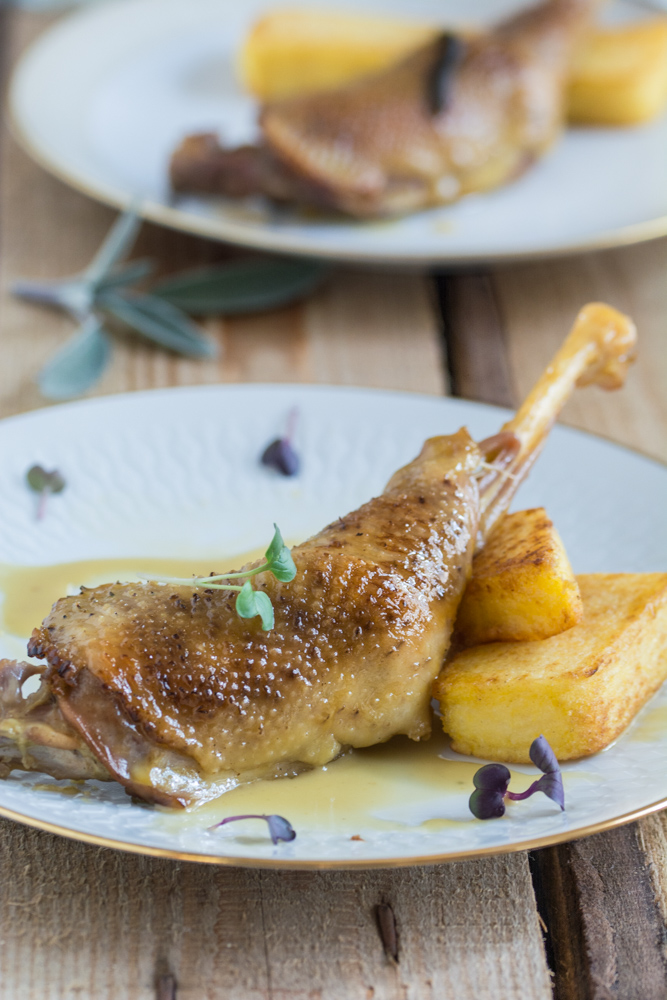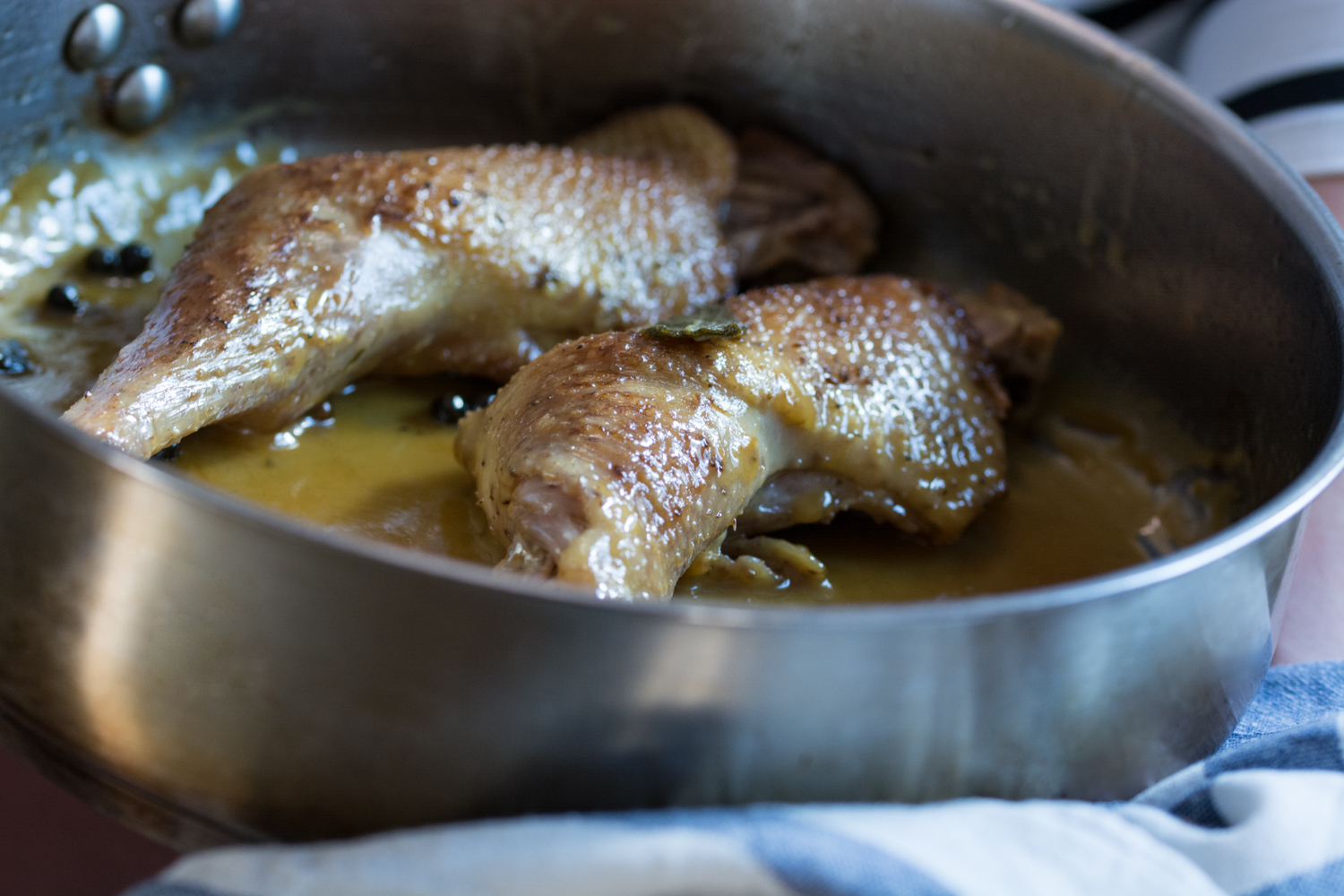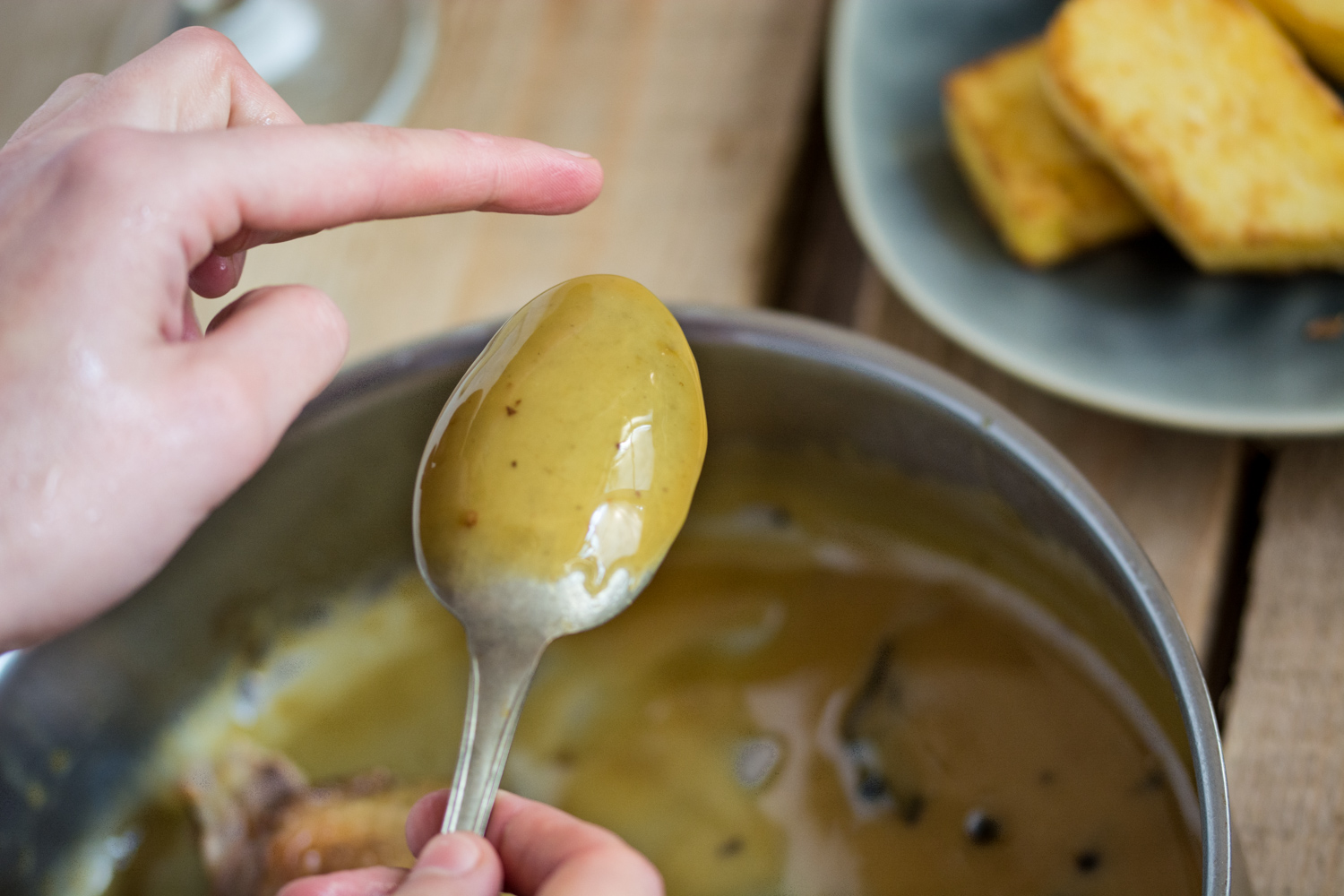In a farm, the rooster has an extremely active life, from fertilizing the eggs, to mentaining the social order and chasing me like a crazy person whenever he’s in the mood for some action defending the chicken family from any potential predator and this active lifestyle must be sustained by a powerful muscular system. After the rooster meat is cooked, this muscular system (which is essential for the fulfilling daily attributions) often turns into a chewy, rubbery, uncomfortable, almost painful mess. To tenderize the meat and to make it juicy I pulled off some two simple and efficient tricks:
- Aging the meat. I learnt this trick from my grandmother. She used to wrap the rooster in parchment paper and refrigerate it for 2 – 4 days. And let me say, this trick really works. It is very important to wrap the meat in parchment paper, and not cling film, because the paper allows the meat to breathe.
- Slow-cooking the meat. I take the aged meat from the refrigerator about an hour before cooking and I let it get to room temperature. I pad dry it and I sear it, I deglaze the pan with wine, I cover the meat halfway with chicken broth and I slowcook it, covered, for about 1 hour, making sure I drizzle some juices from the pan every 15 minutes.
These two basic tricks allow me to get a tender and juicy steak each time. The taste is incredible, earthy, somehow buttery, with subtle notes of wine and sage. To conclude, if I didn’t manage to bust the “rooster is too rubbery” myth, at least I hope I made you curious! Continue reading Braised Rooster Legs with Wine and Sage Sauce




